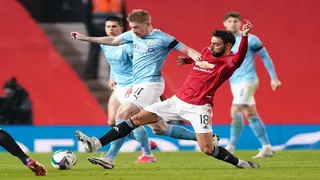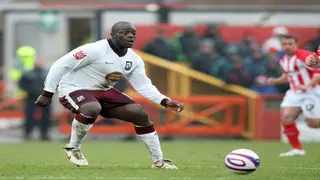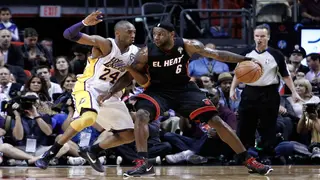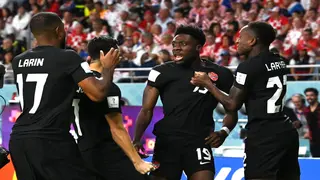Fascinating facts about the best offensive midfielders in the world right now
Football
What does CAM stand for in soccer? It is one of the most glamorous and challenging positions requiring unique skills and excellent vision. The world has seen many talented CAM footballers excel in their clubs and national teams. What does CAM mean in soccer, and who are the best players in the position? Read on to find out.

Soccer has numerous positions where coaches deploy players according to their tactics and formation. From the goalkeeping department to defence, midfield and attack, each position is crucial. The CAM is one of the famous roles because of its significance. So, what does CAM do in soccer? Let us explore the world of the central attacking midfielders to understand their responsibility and what it takes to succeed in the position.
CAM in soccer means Central Attacking Midfielder. It is one of the advanced positions operating between the midfield and attack. Most attacks go through the CAM, one of the hardest football positions requiring unique skills, leadership, and excellent ball vision.
Fascinating facts about the best offensive midfielders in the world right now
Football

Is CAM a real position in football? The position's origin reportedly dates back to the 1940s and 50s, when Brazil's legend Zinzinho played as an attacking midfielder. Dutch icon Johan Cruyff took the role to a different level in the 1960s and 70s, with the Ajax side coached by Rinus Michel.
Cruyff played as an attacking midfielder by drifting out wide or dropping into midfield to get the ball. His free-roaming concept became the backbone of tiki-taka and overpowered opponents who struggled to mark him. Cryuff also implemented the idea with Barcelona and the Netherlands national team.
What position is CAM in soccer? The central attacking midfielder links the midfield and attack by occupying spaces between the two. They provide a creative spark and generate goal-scoring opportunities for their teammates.
CAMs can roam around and find space in the central area of the pitch. Some also rotate places with teammates to open up different passing lanes.
Top 10 strongest football players to ever play the game
Football

The central attacking midfielder has gained popularity in modern football because of their role. Legendary CAM soccer players are known for their versatility, superb ball-handling skills, and outstanding vision. Some of the essential qualities needed to succeed in the position include:

Soccer has produced dozens of talented CAMs who have excelled in the position. Their vision, flair, and ability to unlock stubborn defences helped them to stir their teams to glory. Some sources rank Diego Maradona as the best-attacking midfielder of all time, ahead of Johan Cruyff.
The Argentine had unparalleled vision and dribbling skills, leading his nation to the 1986 World Cup title and bagging trophies with Napoli. Maradona brought joy to fans, establishing himself as an immortal figure and one of the greatest footballers. Cruyff pioneered Total Football and was the architect of Ajax and the Dutch dream team in the 1970s.
What does ISO mean in basketball? The ultimate guide to understanding ISO ball
NBA
The current generation of CAMs comprises Lionel Messi, Kevin De Bruyne, Jamal Musiala, Jude Bellingham, Martin Odegaard, and Bruno Fernandes. Here is a list of the best central attacking midfielders ever and their nationalities.
Best soccer attacking midfielders | Country |
Roberto Rivellino | Brazil |
Dragan Stojković | Serbia |
Gheorghe Hagi | Romania |
Luis Figo | Portugal |
Juan Román Riquelme | Argentina |
Kaka | Brazil |
Michael Laudrup | Denmark |
Pavel Nedved | Czech Republic |
Franceco Totti | Italy |
Zico | Brazil |
Sandro Mazzola | Italy |
Kevin De Bruyne | Belgium |
Bobby Charlton | England |
Michel Platini | France |
Andres Iniesta | Spain |
Ronaldinho | Brazil |
Lionel Messi | Argentina |
Johan Cruyff | Netherlands |
Zinedine Zidane | France |
Diego Maradona | Argentina |

The role of a central attacking midfielder continues to evolve with the changing demands, tactics, and approaches to football. CAMs in the 20th century are different from those in the current 21st century. Here are some of the frequently asked questions about the soccer position.
What are the basics of football positioning? Football numbers by position explained
Football
The definition of CAM in soccer means Central Attacking Midfielder. It is an advanced midfield position linking the midfield and attack. Most CAMs are playmakers and drivers of the team.
The abbreviation CF stands for Centre Forward. The role of a CF is to attack and score goals for the team. A central attacking midfielder usually plays behind a centre forward and supplies them with the ball. Famous centre forwards include Brazilian Pele, Gerd Muller, Ronaldo Nazario, Ferenc Puskas, Luis Suarez, and Karim Benzema.
CDM stands for Central Defensive Midfielder. They are also known as holding midfielders. CMM's role is to guard the back line and provide the team with extra protection. It is different from CAM, which is more advanced in the attack.
Some of the best football CDMs include Sergio Busquets, Claude Makelele, Casemiro, N'Golo Kante, and Daniele De Rossi.
Who are the 10 best Canadian soccer players to ever play the sport?
Football
Most central attacking midfielders wear jersey no.10 and no.8. These are among the most iconic shirt numbers worn by legendary footballers.
What does CAM mean in soccer? The central attacking midfielder is a reputable position in football, played by some of the best players of all time. It is a challenging role, requiring creativity, dribbling and passing skills, and the ability to read the game.
READ ALSO: Identifying the best Dutch soccer players throughout history
Sports Brief published a list of the best Netherlands soccer players ever and their achievements. The Dutch have produced incredible football talents who have transformed the sport and enjoyed massive success with their clubs and the national team.
Legendary Holland players like Johan Cruyff, Marco van Basten, and Arjen Robben also rank among the most successful in football history because of what they achieved. Follow the above link to discover the best Dutch soccer players ever and what they did.